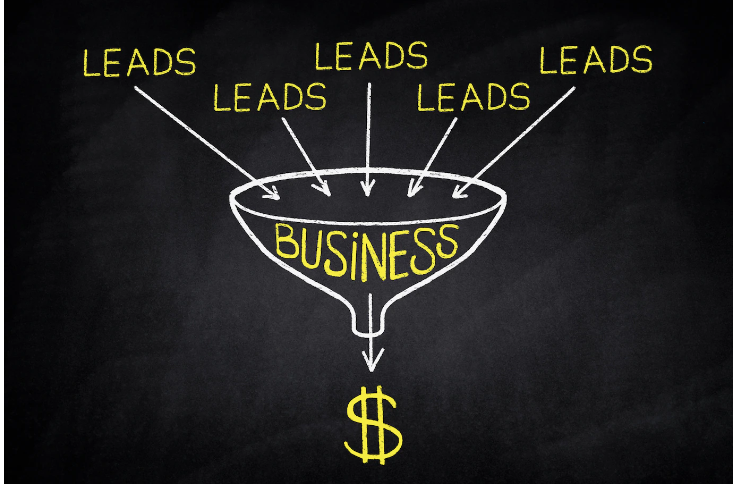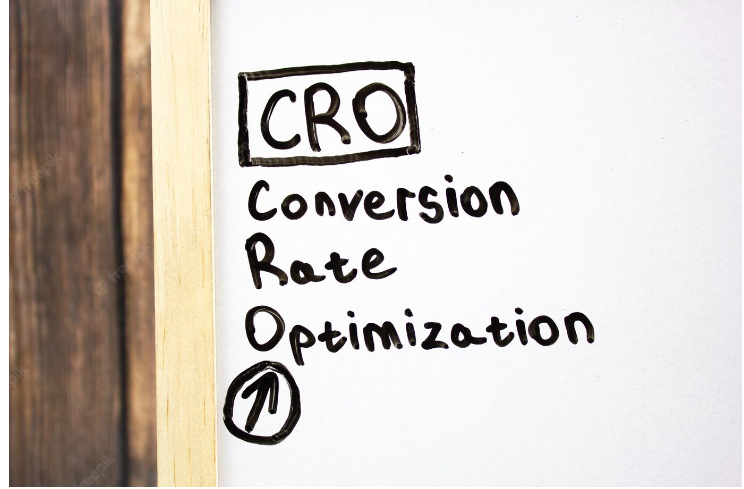
Today’s marketing team mainly focuses on driving the website’s traffic in hopes that traffic will convert from the lead for sale, which is called conversion rate. This battle is only half with work; there are different strategies to which you have to work to convert traffic into conversion rate. This strategy is called conversion rate optimization or CRO, which helps to increase the revenue and takes your brand to the 9th cloud.
We know every business does have a website, but they don’t produce a high number of sales or regeneration customers because there might have lack of digital marketing for the website. And we also understand that the website is the best salesperson for your business as it works worldwide, with no leaves the website asks for. It works 24/7 for your business. It is the perfect sale every single time.
Rate of conversion is the percentage of visitors to your site who take an action, like completing a web form, signing up for a service, or purchasing a product.
Your website will have a high conversion rate if it is well-designed, formatted effectively, and appeals to your target audience. There are a number of factors that can contribute to a low conversion rate, such as website performance or design. Poor conversion rates can be caused by slow load times, broken forms, and copy that does not convey the value of the offer.

Although a good conversion rate depends on your industry, goals, niche, traffic channels, and demographic audience, this can’t be defined in words.
Let us see an example: The average conversion rate for eCommerce sites worldwide was 2.17% in the third quarter of 2020, a decrease from the previous year’s rate of 2.37%. However, the eCommerce conversion rate in the US was higher at 2.57%.
Now, you must think the average differs with country and year; no, it’s not like this; it also depends on the niche. For example, the average food conversion rate is 5.5%, whereas if we look at hair care, it is 3.5%.
At the heart of an effective CRO strategy is continuous testing. By running regular tests, you can establish which combinations of your website’s elements are most effective. A/B testing – which pits the original version of your website against an updated one – is an excellent place to start.
With A/B testing, this includes one change at a time: –
- Image used
- Page Copy
- Page Colors
- Location of page elements
- Your blog should include lead flows: Lead flow is the conversion element on your site. Lead flow is a high-converting pop-up box that depends on different offers’ values. Depending on your request, you can select from the drop-down banner, slide-in box, and pop-up box. Experiment with this box and analyze where the click rates are high.
- Text-based call-to-actions within blogs: The best practice CTA must be put at the bottom of the blog. Sometimes you might have seen that also, after including the CTA, the visitors fail to click it; this is why: –
- Banner blindness is a fundamental phenomenon related to people who are accustomed to ignoring banners on websites. The lack of attention, coupled with the fact that site visitors didn’t go bottom down of the blog, means you have to try a different approach for the CTA to be placed so that the visitor does click on your website.
- The test can be run for CTA: Standalone line of text is usually linked with the landing page and styles as H3 and H4. This can be seen in higher lead conversions than regular CTAs at the bottom.
- Test on different website pages: Landing pages are essential to the marketer’s toolkit. This is integral to converting the rate of optimization. A landing page is where the website visitor becomes a lead and gets converted into a sale. For example, suppose you are taking an A/B test. In that case, you can easily have different versions of website copy, content offers images, and form the question and web page, determining the target leads and audience. With the help of this, it was able to increase the lead conversion rate by 79%. Get everything started effectivity with A/B testing on your website.
- Assist in converting leads into marketing-qualified leads as quickly as possible: You want your high-intent visitors to take specific actions so they can become marketing-qualified leads as quickly as possible: It is possible to motivate your prospects to act by designing thoughtful web pages, writing compelling copy, and intelligent CTAs.
The best way to generate more customers is to run a series of tests and see which one gets the most traction. Once you’ve found the best process, optimize it and focus on making it as smooth and seamless as possible. The goal is to make it as easy as possible for potential customers to buy from you, so look for ways to remove any obstacles or friction that might stand in their way.
- Retargeting and Reengaging website visitors: The bitter truth is that visitors can take a call to action when they visit your website. Once they left, they just left the website. Therefore, to solve this problem, one method launched is retargeting and reengaging your customers. With this method’s help, you can regain your visitors and make them convert into a lead. To make retargeting work, you must have a compelling offer, engaging copy, and attractive visuals.
- Add a message to high-converting web pages: If you use live chat software on your website, it would also be helpful for you and the visitor. If a visitor has any query, it can resolve hand-to-hand; they don’t have to wait for answers to their questions. When visitors get their answers at that time, they might convert into sales. Increasing this feature for high-performance web pages, including product and pricing pages, leads to getting information in real time.
- Optimize high-performing blog posts: When a blog is published, then open opportunities for conversions. Identify your blog posts with the most traffic but the lowest conversion rates, so you can begin optimizing them. Examine your blog content with high conversion rates as well. By optimizing the information for the search engine results page (SERP) or upgrading it as needed to keep it current and relevant, you can direct more qualified website visitors to those posts.
How To Get Started with CRO (Conversion Rate Optimization)?
Before you start with the PIE Framework, you need to prioritize the efforts with the ranks of each element on Potential, Ease, and importance.
There are general question that comes across CRO; they are as follows:-
- Can this project offer a significant improvement in total?
- In what ways will this improvement be valuable?
- Can this improvement be implemented quickly, or will it be difficult?
You can determine which project will have the most significant impact by dividing each strategy’s score by dividing it by three. Working on the highest-rated projects should be the priority.
The PIE framework may be flawed. The document offers a starting point for CRO collaboration and communication and is easy to understand, systematic, and provides a starting point for team collaboration.
Increasing your conversion rate is the key to converting more visitors into paying customers. CRO strategies will generally differ from company to company, but specific steps remain the same. A critical metric needs to be identified, as well as your target audience. You need to collect user feedback and other data to decide what you will test. You’ll run A/B tests on various parts of your site to improve conversions.

What are CRO tools?
Optimizing your conversion rate is simplified or automated with CRO tools. In addition, you can ask them for help with lead capture, research, analytics, mouse tracking, heat mapping, feedback, and experimentation.
CRO testing involves adding, re-adding, and redesigning elements on the website to maximize the conversations. This has different CRO tests, which focus on optimizing the design, copy, and placement of CTAs.
Begin Using CRO
When it comes to conversion rate optimization many best practices are available, but ultimately, you need to evaluate what your customers respond to and how you can use it to drive results.
Three things need to keep in mind: –
- Use three formulas to start with CRO Calculation.
- Make your strategy more effective by leveraging the PIE framework.
- Your business will benefit from experimenting with CRO strategies.
- SEO Powered Content & PR Distribution. Get Amplified Today.
- Platoblockchain. Web3 Metaverse Intelligence. Knowledge Amplified. Access Here.
- Source: https://www.w3era.com/learn-how-to-turn-traffic-into-leads-revenue-your-guide-to-conversion-rate-optimization-testing/